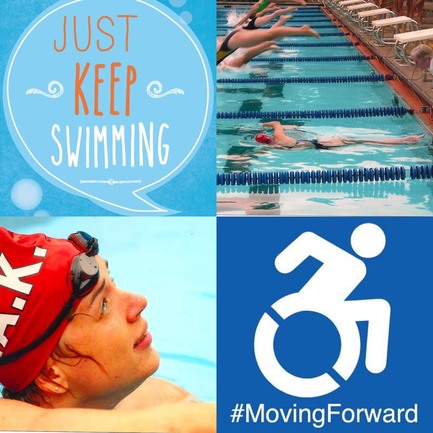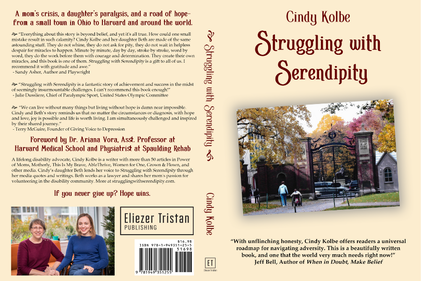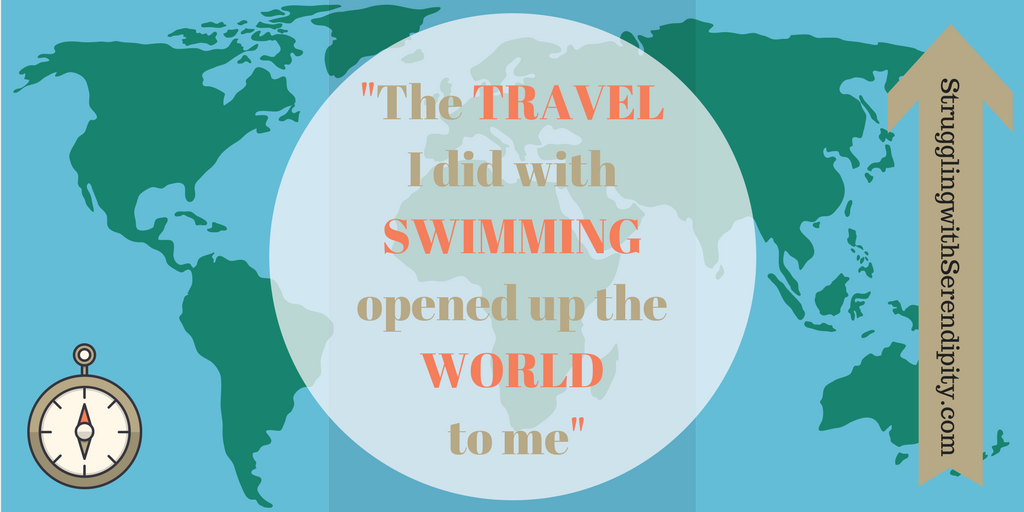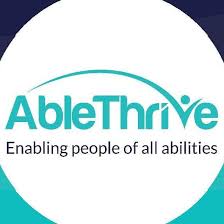ThAnK YoU FOR FOLLOWING MY BLOG! SOME OF YOU HAVE ASKED HOW TO GET A SIGNED BOOK: YOU ARE THE FIRST TO KNOW ABOUT EARLY ACCESS TO SIGNED COPIES OF MY NEW MEMOIR, STRUGGLING WITH SERENDIPITY! I am so grateful for your support and encouragement since I started sharing our story in this blog three years ago! One fall morning, Beth wheeled across the pool deck at Blodgett, and the Harvard men’s coach led his team in applause for her Rio medals. She swam six days a week in and out of the HWSD season during her senior year.
Coaches planned her training cycles to build up to her most important swim meet to date, the Paralympic Trials in April. Occasionally, I met Beth in the Blodgett lobby, helped her over the alarmingly-inaccessible bridge to Harvard Square, and bought us brunch, our favorite meal of the day. I encouraged her to use the bus after practice more often, but she didn’t. Maria taught five preschoolers with multiple disabilities in the Cambridge Public Schools. She started the classroom with two full-time teacher’s aides, including one with a master’s degree. In the Boston area, many adults with college degrees settled for underemployment to obtain health insurance. One of Maria’s students with complex medical needs moved away from Cambridge, a sanctuary city, to Boston with her mom, an illegal immigrant. I worried with Maria about their deportation to a country with subpar children’s services. I volunteered in her classroom a few times and helped with field trips. Maria's enthusiasm and compassion created a safe space for the children, who progressed at a surprising pace. Maria created and followed an intense schedule in 15-minute increments to allow her and her teacher aides to maximize instructional time. She had high expectations and energy. I remember thinking that the residents at my old jobs would benefit from Maria’s level of passion. Sadly, staff tended to have low expectations at too many institutions and group homes. I watched Maria work enthusiastically with a boy speaking his first words. Later, she sat quietly on the floor, blocking the only exit out of a padded play space where a little girl threw a major tantrum. The child tried to get Maria’s attention in negative ways. My daughter ignored the screaming. I thought, “She’ll be a great mom someday.” During a musical performance for parents, all the children, nonverbal and otherwise, played a role. I sat on the stage next to a girl’s tiny wheelchair and held a toggle switch for her to push. The switch played a recorded phrase. The boy learning to speak wore a butterfly costume. He flapped his wings and bounced to the microphone at regular intervals to cheerfully yell, “Chomp!” It was a word he couldn’t say a few months before. The audience loved it. I did, too. Next: Another spike!
10 Comments
Beth’s times in Montreal qualified for the Parapan American Games in Rio de Janeiro to be held in August. Saving money for the probable trip to China, I decided not to fly to Brazil, especially since Peggy would travel on the U.S. team.
One April morning in pouring rain, Beth met her co-workers from John Kerry’s office in the town of Hopkinton. The Senator arrived, greeted Beth by name, and led the way to the start of the Boston Marathon wheelchair race, moving cones out of the way for her. John Kerry’s daughter shared her umbrella with Beth. The Boston staff asked her to work in the Senator’s office for another school year. Beth reluctantly declined to open up a little breathing room as a senior. In Tiffin, John and I mapped out our move from Ohio to the East Coast. I worked most days at the nursing home while John taught his last months in Ohio. Our furniture cost too much to transport, so we made plans to sell it. John created signs for a big garage sale. We evaluated every item large and small to keep, sell, or donate. I tossed most of the stuff accumulated over 30 years into garage sale boxes. We planned to move in a few carloads. I had filled three Amish cedar chests with childhood keepsakes, one for each of my kids. Maria had hers in Massachusetts. John and I drove another to Ben in Columbus. He worked as a supervisor for ADP and planned for graduate school. The chest reminded him of gerbil bedding because of the cedar scent. To simplify his upcoming move to graduate school, Ben gave away the chest to his cousin in Columbus but kept most of the contents. We kept family treasures. My Grandma Barnes’ fancy bowl with etchings on clear crystal always held fresh fruit on my kitchen counter. As a child, I sat at her kitchen table near the bowl and a plate of molasses raisin cookies. My grandma put ice cubes in my glass of milk, a habit I thought peculiar. From her kitchen, I had a clear view of a small room with tables full of blooms, a collage of color. I loved the lavenders, creams, pinks, and blues. Some solid, some variegated, some fancy with ruffles. In a clear glass jar, green stems with roots floated in water, a nursery for baby plants. The room full of African violets captivated me, a soft-spoken child who dunked cookies in iced milk. Back at Harvard for the start of Beth’s junior year, I carried her chair and other items up from the basement storage room. I set up her dorm room before I drove back to Tiffin. She changed her concentration from biology to health care policy with the goal of attending law school. Beth told a reporter about her DC summer and why she changed her major.
“I really fell in love with the policy side of things. After the internship, there was an opening in Senator Kerry’s Boston office to work specifically on disability issues with one of his staffers. They invited me to do that. So, throughout my entire school year I worked in his Boston office. It’s completely different, because it’s much more focused on his constituents. But I really loved that, because you get to talk to people on an individual basis.” Beth rode the T by herself from Harvard Square to the Senator’s office near the Massachusetts State House. One day a week, sometimes two. She stayed on the subway and passed the T stop closest to the Senator’s office to avoid a steep hill. She planned for extra time to wheel the additional distance back to the office, avoiding the inaccessible T stops. She signed up for text alerts to get advance notice when elevators broke down. “When I answered phone calls, I recognized a desperation in their voices as they reached out to their Senator, who was all too often their last hope in solving their issues,” Beth said. “It was rewarding to resolve specific disability-related complaints, but some we could not help.” She stayed in touch with Mary in the DC office and joined the Senator and staff for events, including a campaign rally at Boston’s Faneuil Hall for Deval Patrick, soon-to-be Governor of Massachusetts. Coffee, Beth’s new habit, stoked long days of classes and homework, swim practice and meets, plus volunteering for KSNAP and Senator Kerry. Beth’s new major allowed her to create and follow an individualized program. She selected classes relating to health care, a wide field of study including economics, regulations, inequalities, public opinion, politics, quality control, and buzzwords like adverse selection and moral hazard. She looked forward to classes at two graduate schools. “I explored health care policy and disability issues with courses at Harvard’s Kennedy School and Law School.” They were her favorite classes. Next: A Big Decision! (This blog tells my family's story. To see more, click "blog" at the top of this webpage.)
As Beth’s second year of college began, I helped her move into Pforzheimer House in the Quad where she’d live for the next three years. The irony of a quad (quadriplegic) living in the Quad did not escape us. My trek to the basement storage room to uncover her belongings proved dangerous. A few months before, I could reach everything in the room. Since then, students packed the entire room to the ceiling. I climbed shaky heaps and shifted furniture. A student helped me grab the heavy lift chair off the floor and over more piles. I was lucky to recover Beth’s things undamaged. In her second floor dorm room, I hung Maria’s sunflower quilt on the wall from an old-fashioned picture rail molding. I stocked Beth’s mini fridge and bought boxes of Cheez-its. She shared a three bedroom, one bath suite with two quiet friends, both future doctors with pre-med majors. They studied most of the time, like she did. I slept on her futon for two nights until a sad drive transported me away from Beth. I should have been grateful that she no longer needed me close by, but the separation hurt. If I lived alone near Harvard for another school year and worked three jobs, sharing a dingy apartment would not be fun. Even so, I wished I could be in two places at once. With no assistant or mom down the street, Beth selected biology as her major, a concentration in Harvard-speak, and spent part of her days in the science labs with ongoing physical challenges with the equipment. She usually chose to wheel the mile to and from her labs and classes. She led conference calls for the National Youth Leadership Network, in addition to mentoring. Every Friday, she rode the subway into Boston. “I directed a volunteer program that mentored students in special education classrooms in Boston Public,” Beth said. She also expanded the program to a second school. “We visited classrooms every Friday and took the students on field trips.” Beth depended on the early morning shuttle to get to swim practice, with over two miles between her dorm and the pool. She operated the pool’s chair lift independently to get in and out of the water. It was her first year on the roster of the Harvard Women's Swimming and Diving team. She entered the locked varsity locker room by pressing numbers on a keypad. Easy, compared to handling the heavy doors of the building. She found signs and little gifts at her assigned locker from her secret sis. One morning, she had a new adhesive hook near her locker for her towel, since she couldn’t reach the high hooks. She no longer had to leave her towel at the bottom of her locker. Strong team bonds formed a community that depended on each other. “I made amazing friendships,” Beth said. She joined the rest of the team for scheduled workouts in a weight room. She knew what to do. Coach Peggy had created a personalized workout for her on laminated flip cards. Beth figured out how to hold traditional weights with uncooperative hands, and used stretch cords with loops for handles and heavy medicine balls. The team often swam after the weight room. Nothing if not persistent, Beth put on and positioned her swim cap, by herself. . . . After three years of trying and failing to achieve the task. (This blog tells my family's story. To see more, click "blog" at the top of this webpage.)
Before freshman orientation ended, Beth wheeled over to Harvard’s Phillips Brooks House Volunteer Fair. She chose the Kids with Special Needs Achievement Program (KSNAP), to help students with disabilities at an inner city Boston school. She didn’t think twice about getting to the big city once a week. She volunteered in a special education classroom every Friday afternoon and took turns with other students to plan and purchase materials for activities. Beth soon discovered the unpredictability of old elevators on the MBTA subway, called the ‘T’ for short. Other KSNAP volunteers, including her friend Brittany, moved her (in her manual wheelchair) up and down steps and escalators. Thank goodness John and I weren’t there to watch! We were grateful our youngest didn’t let obstacles get in her way, but we also worried about her safety. As Beth started classes, a swimmer from Michigan asked her to mentor a girl with a new spinal cord injury. When I heard about the emails they exchanged, Beth said, “I love mentoring!” At the Coop, I stood at a cash register in textbooks as students lined up to the back wall. While veteran staff supervised, eight of us, all new employees, rang up large bills at eight cash registers. We commiserated about our sore backs after the long shift. One evening, I worked at a cash register while Beth and Rakhi stood in a long line. On my day off, I returned to textbooks with Beth and carried a heavy stack. Her books included several thick novels for a Charles Dickens freshman seminar, her favorite class. Beth and seven other students accompanied their professor, a Dickens expert, to the catacombs of the rare book library to look at signed first editions of Dickens' books. The depths of the Widener library had not been exaggerated. When the money had been donated to build the impressive library (with over 50 miles of shelves), there were conditions. None of the original bricks could be removed on the façade. The second stipulation: all Harvard students were required to pass a swim test. Harry Widener drowned on the Titanic and his mother thought he would have survived if he had known how to swim. Hence her condition with the donation for the memorial library. The irony of it all? The swimming requirement ended because of the Americans with Disabilities Act, passed in 1990. My daughter Beth, a Harvard student with a severe disability, could easily pass a swim test. My limbs worked fine, but I probably couldn’t. Next: First laps with HWSD! (This blog tells my family's story. To see more, click "blog" at the top of this webpage.)
After Beth’s high school graduation, a nonstop summer swept us away. Swim training fit in-between time with friends. She wore new contact lenses, pleased when she practiced and figured out how to put them in and out on her own with uncooperative hands. In Columbus, Beth helped Coach Peggy with an adapted demonstration for Ohio Swimming coaches. From there, we drove across town to her second Youth Leadership Forum (YLF) for students with a disability. As a staff assistant instead of a delegate, Beth made it her first completely independent trip of five consecutive days. No small feat with a C6-7 spinal cord injury, even with an accessible hotel room. The day after YLF ended, she had one night at home before her flight from Cleveland to Washington, DC, for her first National Youth Leadership Network conference for youth with a disability. “It was my first independent flight,” Beth said. “I’m not sure why, probably just something new and being nervous, but I got teary when Mom left me at security.” On the jetbridge, Beth instructed staff on how to lift her to the narrow aisle chair. They waited while she broke her leg spasms on her own. She helped with the seatbelts and held her arms tucked in as they pushed her down the aisle of the plane to her seat. They stowed her wheelchair underneath with the luggage, minus the cushion and sideguards. When the plane landed, she waited until the rest of the passengers left, reclaimed her wheelchair, and met her contact in baggage claim. A van with a lift waited to take her to the conference. I breathed easier after her phone call from a nice hotel. I had stressed needlessly. Her experience in DC made the stress of the solo flight worthwhile. “When I represented Ohio at the national conference,” Beth said. “I came to understand that the Americans with Disabilities Act and the work of the early pioneers in disability rights was far from over.” “My generation has grown up since the ADA so it’s easy to take it for granted, because we didn’t have to fight for it. Learning from the people who did have to fight and listening to their stories was empowering.” Next: An unexpected new role on a college team! (This blog tells my family's story. To see more, click "blog" at the top of this webpage.)
My initial expectations about Beth’s spinal cord injury proved wrong, in spite of my work experience with disabilities. At a Toledo Raptors fundraiser at the zoo, I spoke with a lovely friend with multiple sclerosis. As we chatted, I remembered our first meeting a few months after the car accident. Then, I judged everyone by their disability, certain that quadriplegia won the ‘worst disability’ contest. I thought that nothing could be as awful as a complete, or nearly complete, spinal cord injury in the neck. I stubbornly clung to that misconception, weighing one disability against another. Through the first years, my view gradually shifted until I compared my earlier notion to a blind person judging a swimsuit contest. Everyone’s lives shared the essence of an iceberg, not just quads. What we couldn’t see under the surface always mattered. One person’s heaven could be another’s hell—with or without a disability. Beth volunteered for WaterWorks in Toledo for the second year in a row, helping children with a disability learn how to swim. At one session, she talked to a group of preschool children before getting in the water with them, not surprised by blunt questions. A little boy asked, “How do you sleep in your wheelchair?” He didn’t look convinced by her answer. In early April, Beth blew out eighteen candles on a chocolate cake. Around our kitchen table, Ellen and Lizzy sang happy birthday with John, Maria, and me. I wondered what Beth wished for. Always skeptical of quad-friendly gadgets, she unwrapped a small present from me, a curved plastic tool, and rolled her eyes as only a teenager could. When I explained what it was, she agreed that opening a soda can with the curved tool would be better than using her teeth. Even so, she chose a different solution. Practice more—and more—until her hands could do the trick. Next: Spring Cleaning on Steroids (at the group home) and Senioritis!  (This blog tells my family's story. To see more, click "blog" at the top of this webpage.) Beth’s wheelchair didn’t rule out anything she really wanted to do. At 17, she started a dozen college scholarship applications and competed on the quiz bowl team. She continually volunteered with different groups, including the Tiffin student athletes who visited elementary schools. A Paralympic coach asked Beth to mentor a teenager from Seattle with a new spinal cord injury. The girls exchanged emails about wheelchairs and prom dresses. At the first practice of the season for the high school swim team, I sat on the YMCA bleachers with a book in case Beth needed me. I usually put on her swim cap—after she tried to do it by herself first—and lowered her from the wheelchair to the deck. Coach Peggy competently took over the tasks. Each swimmer carried a net bag with workout gear. In Beth’s, the typical flat paddles had been cut to a smaller size to fit her hands, with the flexible tubes adjusted to hold the paddles in place. Floating aids strapped on with Velcro. She also utilized a tempo trainer, a battery-operated device the size of a watch face. It worked like a metronome from music class, clicking out the ideal pace. I couldn’t imagine a better coach than Peggy. She modified the team’s workout with creative variations to avoid too much stress on specific arm and shoulder muscles. She also supervised circle turns. Beth couldn’t flip at the wall and push off with her feet like her teammates could. To finish a lap, she approached the wall at the left side of the lane, pushed off with one hand, and completed the half circle to start another lap. “Walls are bad for me,” Beth said. The fewer walls in a race, the faster her times. High school competitions took place in short-course, 25-yard pools. A 100-yard race required three circle turns at the walls. At the end of the first high school team practice, Beth swam to a corner of the pool. With her back to the corner, she placed her hands on the low deck to lift herself out of the water to a sitting position. She tried a few times, almost making it, before being lifted out. She always needed help to get from the deck to her wheelchair and didn’t mind when the boys on the team volunteered. I caught up with her on the way to the locker room, expecting to assist. Beth decided to go it alone for the first time and declined politely. She joined the rest of the girls in the locker room. I waited impatiently in the lobby, wondering if she changed her mind. Sitting in her wheelchair, Beth lifted a knee with her wrist to raise a foot. The opposite hand guided one side of her sweatpants over the dangling foot, before shifting to do the same for the other side. With the goal of placing her feet back on the chair rest with the pants bunched up around both ankles. Eventually, she used her fists and the one finger she could control to slowly pull the sweats up and over her knees. When the pants reached her thighs, she rocked from side to side to continue the prolonged fight. Next, she scooted forward and leaned her shoulders on the back of the chair. Anchored, she lifted her bottom up a few inches to pull the sweats all the way up—inch by inch. In the meantime, the rest of her team showered, changed, and left the YMCA, I found her in the locker room with the sweatpants mostly on. Beth’s first after-swimming solution for independence? Put on baggy sweatpants over a wet suit and then leave to shower at home. Easier said than done. Next: Travel Plans!  (This blog tells my family's story. To see more, click "blog" at the top of this webpage.) Beth made a last-minute request to spend a day at Harvard in Cambridge before returning home. We drove through New Haven, Connecticut, on the way to Massachusetts. I pointed out a sign for another college. “Would you like to visit Yale?” I asked. Her answer? A definite, “No.” She had no interest in any Ivy League college, with one exception. Beth explained in a scholarship application: “Harvard first got my attention because of the national billboard campaign, which suggests an appreciation of the contributions that students with disabilities can make.” Harvard turned out to be more than we expected. A student guide led us through one of the ornate gates into Harvard Yard. The stately buildings, iconic statues, and courtyards with high canopies of ancient trees made a charming first impression. All around us, students and tourists spoke many different languages as the guide shared fascinating history. “I toured the Harvard campus,” Beth said, “and just fell in love with it.” We explored Harvard Square on our own after the tour and ate pizza at Bertucci’s for the first time. The brick sidewalks on some of the streets slowed Beth down, but she never complained. The essence of the Square assaulted the senses, a loud urban setting with too many people, bikes, cars, and taxis. Street performers held the attention of people from all over the world. The intense, diverse humanity of Harvard Square held a charm all its own. Back home in Ohio in early July, Beth worked part-time in the local Community Action Commission, photocopying, filing, and answering the phone. She invited Ellen, Jackie, and Lizzy to pose with her for senior pictures with a local photographer. She swam with GTAC about twice a week at an outdoor pool, even when it rained, and volunteered after practice on the neuroscience floor at St. Vincent. She restocked laundry, made beds, filled water pitchers, and brought snacks for patients. Beth fully utilized an undeniable perk of using a wheelchair: carrying items hands-free on her lap. She balanced heavier items on her lap by holding them in place with her chin as she wheeled forward. Next destination (and highlight!) of a non-stop summer: Columbus, Ohio! (This blog tells my family's story. To see more, click "blog" at the top of this webpage.)
A busy summer stretched out before us. Beth signed up to volunteer at St. Vincent again. She accepted a part-time job in an office and bought tickets for a John Mayer concert. She registered for Ohio’s Youth Leadership Forum, a five-day event for teenagers with a disability. I scheduled college visits around her first and only National Junior Disability Championships in Connecticut. Plus swim practices a few times a week and competing at her second USA Swimming Disability Championships. One thing we didn’t anticipate: a mid-summer invitation that would require an eight hour flight one way. Before summer school started for John, he drove Beth and I to the Chicago Shriners Hospital instead of traveling in the Shriners van. (We had a side trip planned after.) The occupational therapist gave Beth adapted tools to try, including a rocker knife with a knob handle to cut food. The progression of her kyphosis and scoliosis had significantly slowed. A doctor told us that swimming strengthened back muscles, and if the trend continued, she would not need surgery. No fusing the spine with a metal rod that would limit her flexibility and movement even more, in addition to risking more spinal cord damage. One of the teenagers we met at Green Springs could walk before fusion surgery left him with paraplegia. A hand surgeon recommended muscle transfer surgery to give Beth working thumbs. She politely told the doctor that she could use them without surgery, thank you very much. Even though her tenodesis grip was a feeble skill compared to controlling each thumb individually. She refused to consider muscle transfers since the procedure required several weeks of complete dependence afterwards. She wouldn’t give up any of her hard won independence. The Shriner’s social worker asked about college. Before the accident, we assumed Beth’s college would be in Ohio. She decided to major in biology and made a short list of possible colleges with top biology programs. All out of state. “The travel I did with swimming opened up the world to me,” Beth said. After more doctor appointments, we drove across town for a brief look at the University of Chicago. The next day, at the University of Illinois, we met with wheelchair sports staff. The University of Michigan impressed us. She also had toured other colleges with her brother and sister in the past, including Case Western in Cleveland. Beth considered Duke in North Carolina and Johns Hopkins in Maryland, but there wasn’t enough open time to visit both before her senior year of high school started. The first destination of a non-stop summer: Minneapolis! |
Cindy KolbeSign up for my Just Keep Swimming Newsletter by typing your email address in the box. Thanks!Categories
All
Archives
November 2022
|









 RSS Feed
RSS Feed











